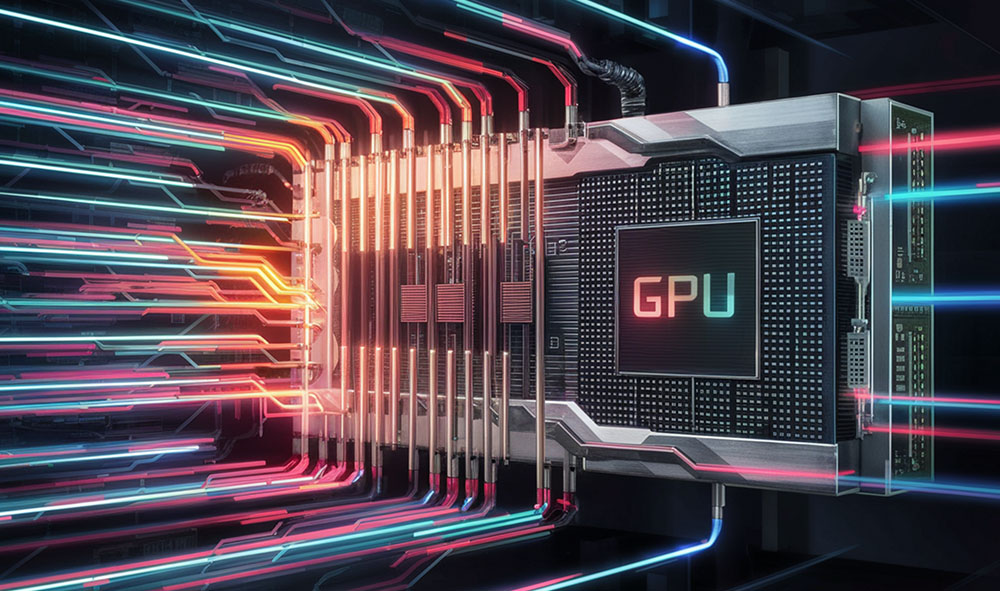The advent of artificial intelligence (AI) has transformed numerous facets of our society, from how we interact with technology to the intricacies of industrial processes. At the heart of this transformation, Graphics Processing Units (GPUs) have emerged as pivotal components, far surpassing their initial use in video games and graphic rendering. This article delves into why GPUs have become indispensable in AI, particularly in neural networks and deep learning.
The Power of Massive Parallelism
GPUs are designed to execute thousands of threads simultaneously, making them highly efficient at handling parallelizable tasks compared to Central Processing Units (CPUs). This ability is rooted in their original architecture, which was intended to manage multiple graphic elements concurrently to produce smooth and detailed images. In an AI context, this architecture is perfectly suited to processing neural networks, where parallel calculations are essential.
For instance, training a neural network involves matrix operations with millions of parameters. These operations can be distributed across the many cores of a GPU, significantly reducing the time required to train models. This reduction in training time is crucial in AI research and development, where rapid iteration is often necessary to refine models.

Matrix Calculation Optimization
Neural networks heavily rely on matrix operations for processing input data, forward propagation, backpropagation, and weight updates. GPUs excel in these operations due to their ability to perform matrix multiplications and additions swiftly and efficiently. This efficiency is attributed to their internal structure, optimized for vector and matrix calculations, a necessity for 3D graphic rendering but equally critical for the mathematical foundations of machine learning techniques.
For example, during the training phase, each layer of a neural network involves complex matrix operations that can be executed in parallel on a GPU. This parallelism not only accelerates the training process but also enhances the accuracy and performance of the AI models.
Energy Efficiency
Consider a data center that needs to train an AI model requiring 100,000 hours of computation. Using a CPU-based setup, which consumes 500 watts per hour, the total energy consumption would be 50,000,000 watt-hours (or 50,000 kilowatt-hours).
If the cost of electricity is $0.10 per kilowatt-hour, the total energy cost for CPU-based training would be: 50,000 kWh×$0.10 /kWh=$5,00050,000 \text{ kWh} \times \$0.10 \text{ /kWh} = \$5,000
Now, if the same computation is done using GPUs, which are 4 times more energy-efficient and consume only 125 watts per hour for the same computational load, the total energy consumption would be 12,500,000 watt-hours (or 12,500 kilowatt-hours).
The total energy cost for GPU-based training would be: 12,500 kWh×$0.10 /kWh=$1,25012,500 \text{ kWh} \times \$0.10 \text{ /kWh} = \$1,250
Thus, by using GPUs, the data center can save: $5,000−$1,250=$3,750\$5,000 – \$1,250 = \$3,750
This significant cost reduction illustrates the financial benefits of GPUs’ energy efficiency in real-life AI deployments.
In large-scale AI deployments, such as those by tech giants like Google and Facebook, the energy savings from using GPUs can be substantial. These savings contribute to more sustainable AI practices, aligning with the growing emphasis on environmental responsibility in tech development.
A Thriving Development Ecosystem
The popularity of GPUs in AI applications has fostered a rich ecosystem of frameworks and libraries optimized for these processors, such as CUDA, TensorFlow, and PyTorch. These tools provide high-level primitives for calculations on GPUs, making AI model development more accessible and faster. They also offer automatic optimizations that fully leverage the underlying hardware, allowing researchers and developers to focus on innovation rather than hardware implementation details.
CUDA, developed by NVIDIA, is a parallel computing platform and application programming interface (API) model that allows developers to use NVIDIA GPUs for general purpose processing. This platform has been instrumental in advancing AI research by providing a powerful toolset for harnessing the computational power of GPUs.
Real-World Applications and Case Studies
The impact of GPUs on AI extends across various industries:
Healthcare
In healthcare, GPUs enable real-time processing of medical images, assisting in diagnostics and treatment planning. For example, deep learning models trained on GPUs can analyze MRI scans to detect anomalies with high accuracy, speeding up diagnosis and improving patient outcomes.
Automotive
In the automotive industry, GPUs power the AI algorithms in autonomous vehicles, processing vast amounts of sensor data to make real-time driving decisions. Companies like Tesla leverage GPUs to train their neural networks on driving data, enhancing the safety and reliability of self-driving cars.
Financial Services
In financial services, GPUs are used for high-frequency trading algorithms and risk modeling, where the ability to process large datasets quickly can lead to significant competitive advantages. Banks and investment firms utilize GPUs to run complex simulations and predictive models that inform trading strategies and risk assessments.
Ethical Considerations and Sustainability
As AI continues to evolve, ethical considerations and sustainability have become increasingly important. The energy efficiency and processing capabilities of GPUs play a crucial role in minimizing the environmental impact of AI technologies. Sustainable AI practices are essential to ensure that the benefits of AI do not come at the expense of the planet.
Moreover, ethical AI development involves ensuring that AI systems are transparent, fair, and unbiased. GPUs enable the processing power necessary to train complex models that can be scrutinized and validated for ethical standards. This capability is vital in fields like healthcare and finance, where ethical considerations are paramount.
Conclusion
GPUs have become a cornerstone of the infrastructure required for developing artificial intelligence due to their ability to perform complex parallel operations, their efficiency in matrix processing, their energy efficiency, and the robust development ecosystem that supports them. While CPUs remain crucial for many computing tasks, GPUs will continue to play an essential role in advancing AI, particularly in machine learning, computer vision, and natural language processing.
As technology progresses, GPUs are expected to become even more integral to AI research and practical applications across various industries. The growing importance of ethical considerations and sustainability in AI development also highlights the role of GPUs in reducing the environmental impact of emerging technologies.


